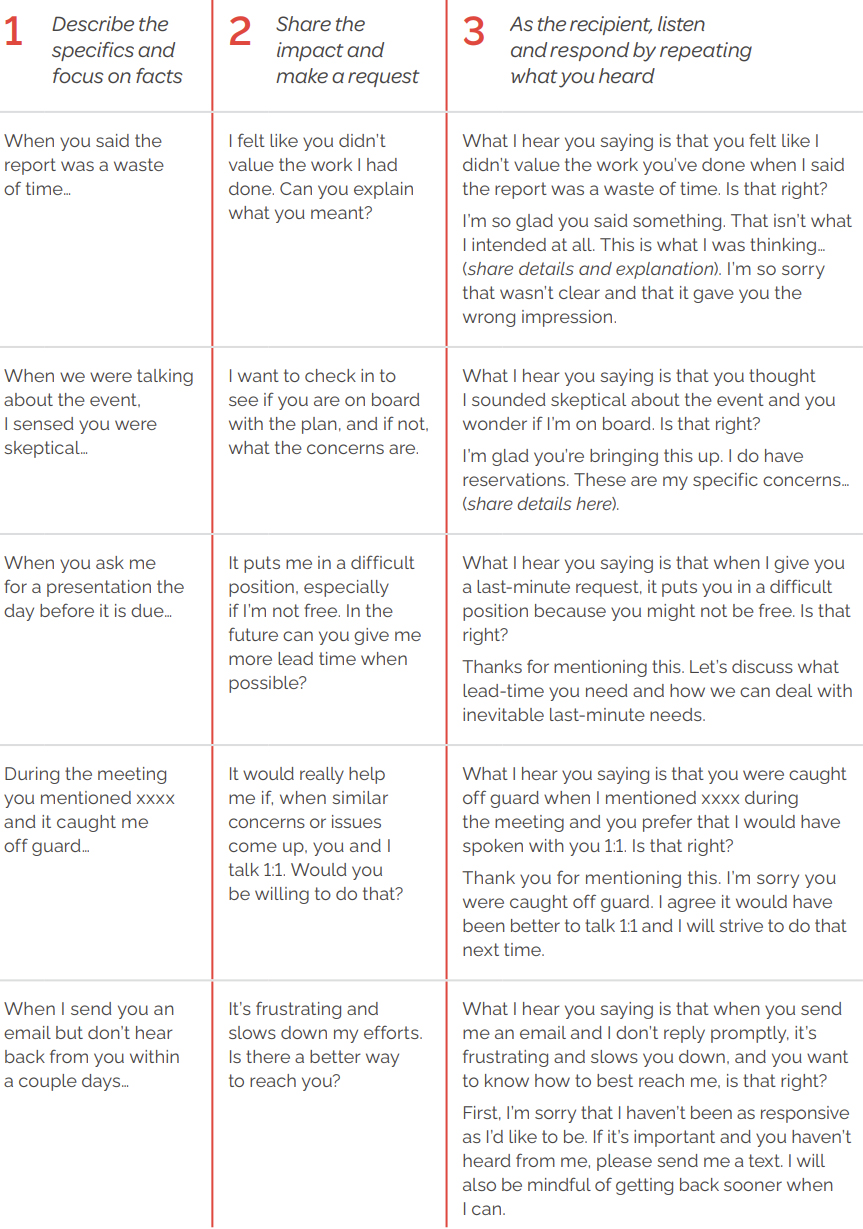
Difficult Conversations at Work and Keeping the Spaces Between Clean
June 28, 2022

Addressing conflict and holding difficult conversations with colleagues at work is not easy. Most of us avoid it at all costs. At ROI, we have adopted a philosophy around how we engage with one another, how we handle difficult conversations in the workplace, and how we honor the energetic space between us, striving to keep that space clean.
This concept is borrowed from Hedy Schleifer, a master relationship builder, who developed the concept of the “space between.” The space between is the energetic space between two people, or between a group or a team. That space is where the relationship lives. It’s also the place where everything happens – children grow up here, your team works here – and if it’s polluted, it’s not a great place to be. So in approaching difficult conversations at work, a key focus is around keeping those spaces between clean.
When you think about your children living in this space, the concept is easy to understand. And it works just as well in the workplace, between and among employees and teams. When the space between is free of anger, resentment and misunderstanding, it’s easier to get things done and enjoy one another in the process. Honoring the space between requires cleaning up misunderstandings when they happen and not letting negativity linger.
Here are some steps for keeping the “space between” clean and how to have difficult conversations at work:
- Address concerns when they come up
- Be thoughtful and prepared with what to say
- Be aware when giving and receiving feedback
When someone says or does something that doesn’t feel right, take note. Maybe you feel unease in the pit of your stomach or another negative physical sensation. Pay attention to that feeling and ask yourself, “Why do I feel uneasy or upset?” If it makes sense to mention something in the moment, do. For instance, if you’re in a meeting when it happens, you might say, “I’d like to talk with you further about that at some point.” “Some point” should be within a few days. Give yourself time to think about what to say, how to say it and when to say it. If you’re not comfortable saying something in the moment because you’re caught off guard, or the timing isn’t appropriate, that’s okay. It’s better to think it through than to be impulsive. After a couple of days, you may decide it’s not worth addressing. If it’s a one-off situation that you don’t expect to come up again, perhaps let it go. However in other cases, if you let it go this time, it will come back again and may be harder to address. Err on the side of communicating more. Reach out and schedule time to talk with the person and set the context. For instance, say, “I’d like to talk with you about the conversation that came up in the meeting today. Can we schedule some time?” For the most part, don’t bring up past issues unless they pertain specifically to the issue you’re addressing now. Whether the meeting is impromptu or scheduled, open the conversation with something along the lines of “I’d like to talk about [insert topic here] – our interaction yesterday. . . what you said in the meeting. . . the email you sent.”
Here are some things to keep in mind when approaching the conversation:
- Describe the specifics and focus on facts
- Share the impact and make a request
- As the recipient, listen and respond by repeating what you heard
Before the conversation begins, make sure you are in a good frame of mind. Check in with yourself to be sure you aren’t hungry, angry, stressed or tired. Being in one of these states makes a difficult conversation harder.
The most important thing for both parties to do is listen. Give space for the other person to fully express themselves before responding. Don’t think about what you want to say next, just listen with an open mind and hear what they are saying. It’s easy to feel defensive, so be intentional about staying open and calm. Reflect back what you heard before responding to make sure you have it right. Here are some sample conversations that run through each of the three steps above.
Here are some example conversations:

As the receiver of feedback, try not to ask for too many details or examples. This can put the person giving the feedback in a position of defending it. Remember, the goal is to seek understanding, not proof. Empathy is useful here. When you are giving feedback, consider whether the team member in question is dealing with something difficult, either at work or in their personal life, that might make them out of sorts. It’s important to remember the goal of keeping the spaces between clean. It’s not about determining who is at fault, or who is right or wrong. It’s about keeping relationships strong and helping the team be more effective overall.
Learn about The 7 Elements of an Enlightened Workplace:
See Also:
Contributors:
Barbara Fagan
CEO
Barbara is the founder of ROI. Named one of Silicon Valley’s most influential women and a lifelong nature lover, author and inspirational speaker, Barbara has devoted her career to improving the lives of employees and strengthening their relationship to their families, their passions and their work.








